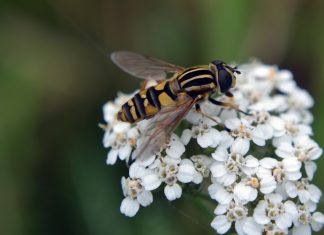INTRODUCTION
Definition of Canning & Preserving
Canning & Preserving are methods of food preservation that involve storing food in airtight containers to prevent spoilage. Canning involves heating food in jars and sealing them to create a vacuum, which preserves the food for longer periods of time. Preserving involves various methods such as freezing, fermenting, pickling, and drying to keep food from spoiling. The goal of both canning and preserving is to extend the shelf life of food and make it available for consumption at a later time.
Importance of Canning & Preserving in today’s world
Canning & Preserving has become increasingly important in today’s world due to a number of factors:
- Sustainability: Canning & Preserving allows people to preserve surplus food, reducing waste and promoting sustainability.
- Food Security: Canning & Preserving provides a way for individuals and communities to have access to a consistent food supply, even during periods of scarcity or hardship.
- Cost-effective: Canning & Preserving can help save money by reducing the need for frequent grocery trips and allowing people to buy in bulk when produce is in season.
- Health Benefits: Canning & Preserving allows people to control the ingredients and additives in their food, leading to healthier eating habits.
- Convenience: Canning & Preserving makes it possible to have access to home-cooked meals, even when time is limited.
In conclusion, Canning & Preserving is an important aspect of food storage and consumption, providing numerous benefits in terms of sustainability, food security, cost-effectiveness, health, and convenience.
Purpose of the article
The purpose of the article is to provide a comprehensive overview of Canning & Preserving, including its definition, benefits, types, essential equipment, techniques, and popular recipes. The article aims to educate readers on the importance of Canning & Preserving in today’s world and the various methods that can be used to preserve food.
The article will also provide information on the various equipment and tools needed for Canning & Preserving, as well as tips and techniques to help readers get started. The goal is to equip readers with the knowledge and resources they need to successfully preserve food and extend its shelf life.
In summary, the purpose of the article is to provide a comprehensive guide to Canning & Preserving, encouraging readers to try it for themselves and experience its many benefits.
What is Canning & Preserving?
Like we said above, canning and preserving are methods of food preservation that involve sealing food in jars or containers to prevent spoilage, and increasing the shelf life of food. The jars or containers are heated to a high temperature to kill bacteria and sterilize the food, and then sealed airtight to prevent re-contamination. This process allows food to be stored for an extended period without the need for refrigeration.
Canning and preserving are often used to preserve fruits, vegetables, sauces, and pickled items. There are two main types of canning: water-bath canning and pressure canning. Water-bath canning is a method that uses boiling water to heat the jars and sterilize the food, and is best for high-acid foods like fruits and pickled vegetables. Pressure canning, on the other hand, uses a pressure cooker to heat the jars to a higher temperature, and is recommended for low-acid foods like raw vegetables, meat, and poultry.
In addition to increasing the shelf life of food, canning and preserving also allows for year-round access to seasonal produce, and can help reduce food waste by preserving surplus crops. However, it is important to follow proper canning techniques to ensure that the food remains safe to eat. This includes using tested recipes, following the recommended processing time and pressure, and inspecting jars for proper seals and signs of spoilage before consumption.
Differences between canning and preserving

Canning and preserving are methods of preserving food, but there are differences between the two:
- Method: Canning involves heating the food in an airtight container and sealing it, while preserving typically involves using sugar, salt, vinegar or other ingredients to prevent bacteria growth and extend shelf life.
- Shelf life: Canning can preserve food for up to 2-5 years, while preserving typically extends the shelf life of food for several months to a year. Reading informative blogs like https://www.mrswages.com/how-long-does-homemade-canned-food-last/ focused on homemade food canning processes can help you can your food properly.
- Food types: Canning is commonly used for fruits, vegetables, sauces, and soups, while preserving is used for fruits, jams, jellies, pickles, and other types of condiments.
- Preparation: Canning typically requires more equipment and preparation time than preserving, as it involves heating the food to high temperatures.
- Flavor: Preserving often changes the flavor and texture of the food, while canning generally has less impact on the original taste and texture of the food.
In conclusion, both canning and preserving are methods of preserving food, but they have different processes, shelf life, food types, preparation and flavor impact.
Benefits of Canning & Preserving
Long shelf life: Canning and preserving extend the shelf life of food, allowing you to store it for months or even years.
Reduced food waste: Canning helps prevent food waste by preserving surplus produce and reducing spoilage.
Convenient storage: Canning allows you to store food in a compact, stackable, and easily accessible manner.
Cost savings: Canning and preserving can be less expensive than buying pre-packaged or processed foods.
Healthier options: Canning allows you to control the ingredients, so you can make healthier, preservative-free food options.
Flavor preservation: Canning preserves the natural flavor and nutrients of the food, allowing you to enjoy it all year round.
Sustainable food sourcing: Canning and preserving can help support local and sustainable food systems by preserving in-season produce for later use.
Types of Canning & Preserving
Water bath canning: a method for preserving high-acid foods such as fruits, jams, jellies, and pickles.
Pressure canning: a method for preserving low-acid foods such as vegetables, meat, poultry, and fish.
Freezing: preserving food by rapidly cooling and storing it at low temperatures.
Dehydrating: removing moisture from food to extend its shelf life and preserve its flavor.
Pickling: preserving food in an acidic solution, often vinegar or brine, to extend its shelf life and add flavor.
Fermentation: preserving food by encouraging the growth of beneficial bacteria to produce lactic acid, which acts as a natural preservative.
Infusing: preserving food by soaking it in liquids such as oil or vinegar to impart flavor and extend its shelf life.
Smoking: preserving food by exposing it to smoke from burning wood chips or sawdust to add flavor and extend its shelf life.
Essential Equipment for Canning & Preserving
- Canning jars with lids and rings: to store the preserved food.
- Water bath canner or pressure canner: for safely processing the jars to preserve the food.
- Canning funnel: to help pour food into jars without spilling.
- Jar lifter: to safely remove hot jars from the canner.
- Magnetic lid lifter: to safely remove lids from hot water.
- Ladle: to measure and pour food into jars.
- Kitchen scale: to measure food accurately.
- Cutting board and knife: to prepare the food for preservation.
- Blender or food processor: to puree fruits and vegetables.
- Measuring cups and spoons: to accurately measure ingredients.
- Thermometer: to ensure food is at the proper temperature.
Canning & Preserving Techniques

Canning and preserving techniques are methods used to extend the shelf life of food by removing air, preventing the growth of bacteria, and sealing it in a sterile container. The following are some common techniques:
Water Bath Canning: For high-acid foods such as fruits, pickles, and jams.
Pressure Canning: For low-acid foods such as vegetables, meat, and poultry.
Freezing: Food is placed in a freezer, which slows down the growth of bacteria.
Dehydrating: Removes moisture from food to extend its shelf life.
Fermenting: Uses bacteria to preserve food, producing lactic acid that slows the growth of harmful bacteria.
Vacuum Sealing: Removes air to extend the shelf life of food by preventing the growth of bacteria.
Pickling: Uses vinegar or brine to preserve food and add flavor.
Popular Canning & Preserving Recipes
Here are some popular canning and preserving recipes:
- Strawberry Jam
- Pickled Cucumbers
- Tomato Sauce
- Apple Sauce
- Peach Preserves
- Blueberry Syrup
- Salsa
- Pickled Beets
- Pickled Carrots
- Hot Sauce.
Note: Always follow proper canning and preserving techniques to ensure the food is safe to consume.
Importance of proper techniques and equipment
Proper canning and preserving techniques and equipment are important because they help ensure that the food is safe to eat. Here are some reasons why:
- Sterilization: Proper techniques and equipment help to sterilize containers and eliminate bacteria that could cause food to spoil.
- Air Removal: Removing air from containers helps to extend the shelf life of food by preventing the growth of bacteria.
- Seal Integrity: Proper equipment is necessary to ensure a secure seal on containers, which prevents air and bacteria from entering and spoiling the food.
- Temperature Control: Canning and preserving techniques often involve high temperatures to kill bacteria, and proper equipment is necessary to accurately control and monitor these temperatures.
- Food Safety: Incorrect techniques or using contaminated equipment can lead to the growth of harmful bacteria and spoilage, making the food unsafe to eat.
Therefore, it is important to follow recommended guidelines and use proper equipment to ensure that the food is safely preserved and has a long shelf life.
Encouragement to try Canning & Preserving at home.
Canning and preserving at home is a great way to enjoy fresh, delicious food all year round, and can also be a fun and rewarding hobby. Here are some reasons why you should try canning and preserving at home:
Fresh and Healthy: Canning and preserving allows you to control the ingredients, using fresh, organic produce and avoiding preservatives and additives.
Cost Effective: Canning and preserving can save you money in the long run by allowing you to buy in bulk and preserve food for later use.
Customizable: You can experiment with different spices and flavors to create unique and personalized recipes.
Sustainable: Canning and preserving reduces food waste and allows you to enjoy the bounty of the season long after it has passed.
Sense of Accomplishment: There’s a great sense of satisfaction in creating and preserving your own food, and it’s a fun and creative process.
With proper equipment and techniques, canning and preserving is a safe and easy way to enjoy fresh, delicious food all year round.














